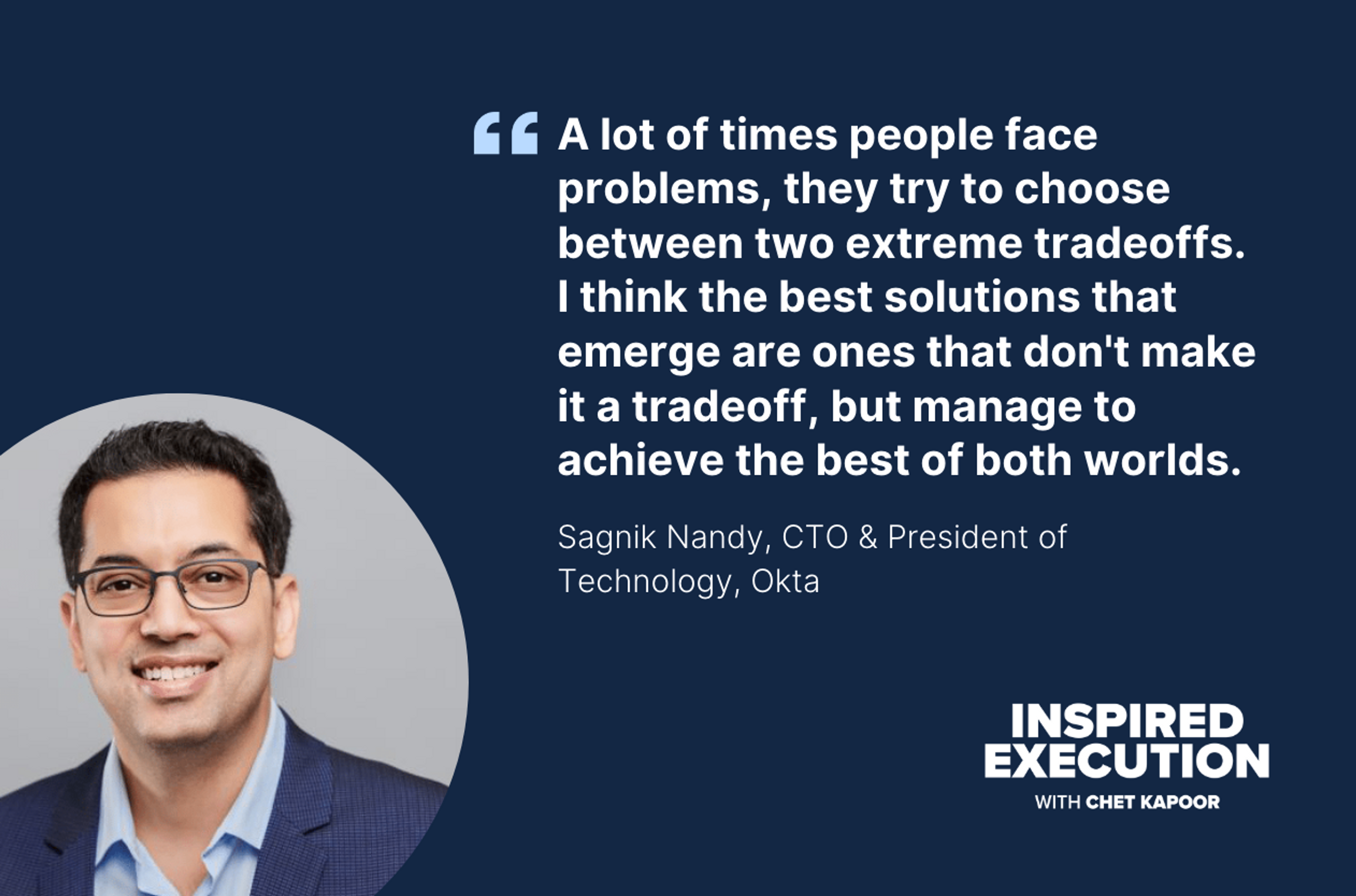Okta CTO Interview: Solving Intergalactic Problems and Planning for Sustainable Growth

If you had to describe your career journey so far in one word, what would it be? For Sagnik Nandy, that word is “gratitude.” From solving intergalactic problems at Google for 15 years to becoming CTO at Okta, Sagnik is deeply grateful for the opportunity to work with really smart people to build amazing technologies that make a real impact. He recently joined me on the Inspired Execution podcast to share his top tips for building scalable products and key learnings from the defining moments in his career.
What makes a satisfying career
Finding career satisfaction – no matter where you are in your journey – is about solving hard problems with smart people while having fun. Consider these questions consistently throughout our career and let the answers guide your path:
- Do I love the problem(s) I’m solving ?
- Do I enjoy the people I’m solving them with ?
- Am I having fun ?
Sagnik spent 15 years at Google, working his way up to Vice President of Engineering for their core advertising business.
“For me, as an engineer at heart, [Google] was an amazing place to be,” Sagnik said. “It had some really interesting technical problems in [many] different areas of computer science and even other disciplines. And solving these problems had tremendous impact on millions of people.”
What made Sagnik even more excited to go into work every day was the phenomenal people he got to collaborate with and learn from. He recalls having conversations with colleagues who were deep experts in their areas, yet they always valued and encouraged his point-of-view.
“It felt like every idea was up for discussion. People were audacious in what they would bring up, and it was possible to take any of those ideas and run with it. Some great things happened because people questioned the status quo on a regular basis. So it felt like a small startup, but the largest possible version of it,” Sagnik shared.
Building scalable products
Though Sagnik loved his role at Google, he came to a point where he wanted to try something different, face a new challenge, and prove to himself that he could succeed outside of the world of Google. This led Sagnik to Okta, the world’s #1 identity platform. As CTO and President of Technology, he is helping deliver simple and secure access to people and organizations everywhere.
One thing Sagnik has learned from many years of building scalable products is this: you have to proactively plan for sustainable future growth, but you also have to move fast to solve critical issues for your customers (especially today, and especially in the identity management space).
“A lot of times people face problems, they try to choose between two extreme tradeoffs. I think the best solutions that emerge are ones that don't make it a tradeoff, but manage to achieve the best of both worlds,” Sagnik said.
People often think that velocity and scale can’t exist at the same time. But great leaders like Sagnik are constantly finding the balance of moving fast without compromising on quality, and planning for the future while fulfilling immediate needs. It’s hard to do, but it’s possible. And if you can master this, magic happens.
Tune in now
Listen to Sagnik’s episode of Inspired Execution for more insights on building awesome products, leading teams boldly, and much more.
Next time on the podcast, we have Bill Neukom. He dominated his field as the lead lawyer for Microsoft for more than 25 years before serving as managing partner for the San Francisco Giants. Now he runs the World Justice Project, with the mission to promote the rule of law across the globe.




